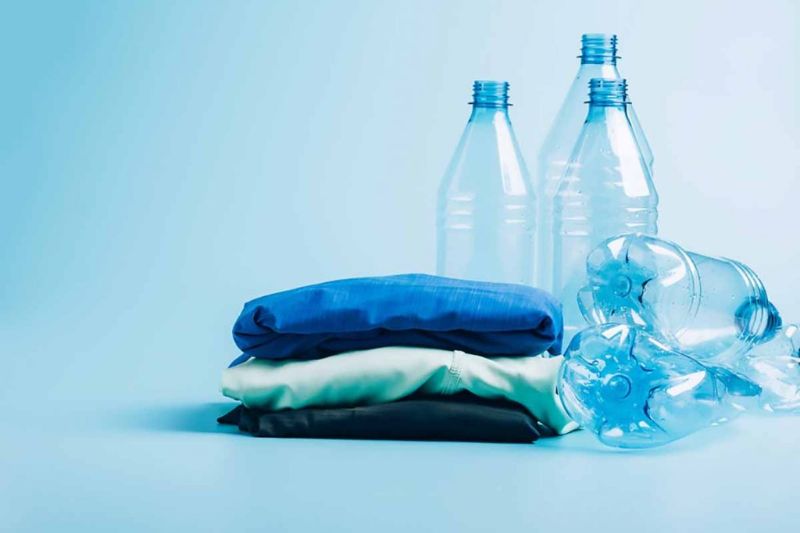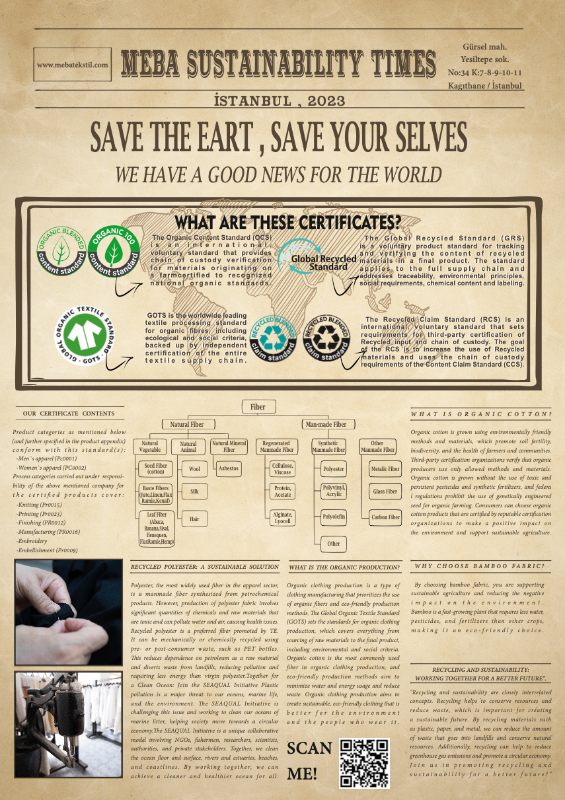 Date last modified: 2023-05-23
Date last modified: 2023-05-23
RECYCLED POLYESTER
Polyester is a manmade fiber, synthesized from petrochemical products by a process called polymerization. With 49% of the global fiber production, polyester is the most widely used fiber in the apparel sector: more than 63,000 million tonnes of polyester fiber are produced annually. Production of polyester fabric involves significant quantities of chemicals, raw materials and by-products that are toxic and can pollute water and air and cause health issues.
Recycled polyester is promoted by TE as a preferred fiber. It can be either mechanically or chemically recycled, with feedstock consisting of either pre- or post-consumer waste that can no longer be used for its intended purpose. This includes returns of materials from the distribution chain.
Advantages to recycled polyester:
• Using more recycled polyester reduces our dependence on petroleum as the raw material for our fabric needs.
• Diverting PET bottles for this process reduces landfill, and thus reduces soil contamination and air and water pollution and requires less energy than virgin polyester.
• Garments created from recycled polyester aim to be continuously recycled with no degradation of quality, allowing us to minimize wastage. This means polyester garment manufacture could potentially become a closed loop system.
Challenges and outreaches:
• Solving quality issues through contaminations of various additives like antioxidants, pigments, stabilizers or anti blocking agent and shortening of the polymer chain at de-polymerization stage.
• Finding substitutions for antimony, a polyester catalyst known to be cancer causing (potentially 500mg/kg PET).
• Ensuring constant industrial feedstock and closing the loop by fostering feedstock from textile pre- and post consumer waste.
• Achieving traceability and transparency in the collecting, sorting and processing with social and fair conditions.
• Looking at lifecycle considerations: biodegradability and recyclability of polymers.
• Outreaches to other synthetic polymers: What are the future polymers?
• Transition towards renewable biogenic feedstock turning into technological fibers.
There is more to do to reach economies of scale. Challenges are still to be overcome in the factory, the marketplace, and in communities where recycling and bring-back schemes need to start. This WG aims to transform business - move from linear to circular, and to find solutions to technical, societal, and commercial barriers to growth.
ORGANIC PLANT-BASED CELLULOSIC BAMBOO FIBER
Bamboo fabric is a natural fabric made from the pulp of the bamboo grass. It has been growing in popularity because of its unique properties, sustainability and its eco-friendly. Bamboo fabric is lightweight fiber and strong, has excellent wicking properties and can be worn directly next to the skin. It is hypoallergenic, a natural antibacterial and has UV protective qualities.
Many people who experience allergic reactions to other natural fibers, do not complain of this issue with bamboo. The fiber is naturally smooth without chemical treatment, meaning that there are no sharp spurs to irritate the skin. It is cool and does breathe making it a great choice for summer clothes


